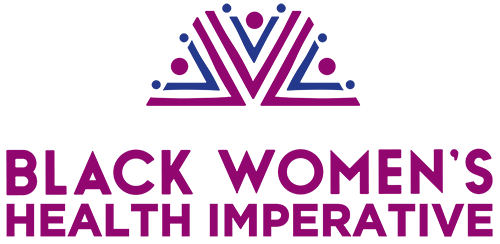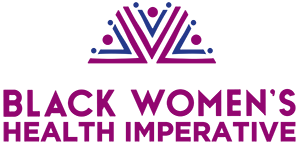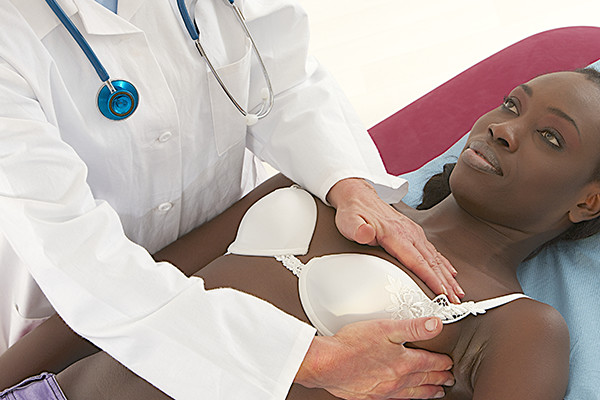The Black Women’s Health Imperative was the only women’s health non-profit invited to participate in the American Congress of Obstetricians and Gynecologists Breast Cancer Screening Consensus Conference in January. Researchers from the American Cancer Society, U.S. Preventive Services Task Force and National Cancer Institute presented science that backs their recommended changes in screening mammography guidelines. As president and CEO, I was invited to give remarks and was able to challenge changing the guidelines on the basis that no Black women were included in the studies. Here are my remarks.
Since 1983, the Black Women’s Health Imperative has been the only nonprofit organization committed to advancing the health and wellness of the nation’s 21 million Black women and girls through advocacy and public policy, health education, research and leadership development.
For 32 years, we have informed and empowered women to understand their health and to be proactive in gaining access to life-saving preventive and treatment services. We and our partners have worked with legislators at the state and national levels to ensure policies are in place that promote health and wellness for women. And, our programs, campaigns, publications, and digital media serve as models for understanding the interdependence of the social determinants of health. We know that health is a justice issue and justice in health is also justice in education, housing, transportation and food, among many other factors.
This is why today’s convening is so important. The Affordable Care Act was a major victory for women’s health – particularly that of Black women, women of color and low-income women, who are disproportionately women of color. Under the ACA, women now have access to previously unattainable health insurance and to preventive services at no cost. And for those who insist claims that the impact of insurance on health are over-blown, consider this fact: A woman without insurance diagnosed with breast cancer is twice as likely to die as a woman with the same diagnosis who has insurance. The most important factor in a woman’s survival is getting her breast cancer detected early when treatment outcomes are much better.
Each year 6,000 Black women die from breast cancer. If we had the same mortality rate as white women, there would be 2,400 fewer deaths. The science is clear. Equal treatment for breast cancer yields equal outcomes. If Black women have their cancers detected early when they are most successfully treated and receive quality treatment, fewer would die.
After 25 years of education and encouragement, Black women have achieved the same breast cancer screening rates as white women. According to the American Cancer Society, in 2010, the proportion of Black and white women between the ages of 40 and 75 who had received a screening mammogram in the past year was 51 and 52 percent respectively. The proportion of those who had received a screening mammogram in the past two years was 66 and 67 percent respectively.
Early screening is especially critical for Black women because they tend to be diagnosed with breast cancer on average five years younger than white women, are more likely to have their breast cancers detected later when they are more advanced, and more likely to be diagnosed with the more aggressive form of triple negative breast cancer.
For years, data showed that Black women, overall, got breast cancer about 4 percent less often than white women. But new data, just released from the American Cancer Society, now shows Black women are getting breast cancer at the same rate as white women. What makes that finding so troubling is the fact that Black women are 42 percent more likely to die from the disease as their white counterparts. Black women under the age of 40 are diagnosed at higher rates than white women.
So there is an interesting health policy tableau: Women, who get breast cancer at a younger age and now have access to health insurance that covers screening mammography at no cost, could lose the ability to have their breast cancers detected early, thus increasing mortality from breast cancer.
This year, both the US Preventive Services Task Force (USPSTF) and the American Cancer Society (ACS) issued recommended breast cancer screening guidelines. Both organizations raised the age at which screening should begin for women of average risk. Both allowed for the woman, in consultation with her physician, to make an informed decision about when to begin screening. Both have confused women and physicians alike.
The USPSTF upheld its 2009 recommendation concluding there isn’t enough data to support screening average riskwomen before age 50. The Task Force issued the following statement: “The decision to start screening mammography in women prior to age 50 years should be an individual one. Women who place a higher value on the potential benefit than the potential harms may choose to begin biennial screening between the ages of 40 and 49 years.”
The American Cancer Society revised its guidelines stating that women of average risk can start getting screened at age 45. Jessica Firger reported in Newsweek, “The new guideline is more personalized and tailored, and it creates a roadmap to guide a woman’s screening decisions throughout her lifespan,” says Dr. Richard Wender, chief cancer control officer at ACS and co-author on the guidelines. “It will require that women have a richer understanding of the different recommendations matching to different age groups.”
There are at least five sets of current guidelines from respected medical institutions – The American Cancer Society, the American College of Obstetricians and Gynecologists, National Comprehensive Cancer Network, American College of Radiology/Society of Breast Imaging, and US Preventive Services Task Force – that recommend varying screening ages for mammography ranging from 40-50 and to do so every year or every other year. A number of other organizations, such as the American College of Obstetrics and Gynecology have maintained existing guidelines that advocate starting screening at age 40.
If a woman is not an oncologist, does not have a close relationship with one or, for some reason, doesn’t happen to understand breast cancer etiology herself, how is she to place “a higher value on the potential benefit than the potential harm so that she may choose to begin biennial screening between the ages of 40 and 49 years?” And how will she develop, “a richer understanding of the different recommendations matching to different age groups”?
These shifting mammography guidelines are raising more and more controversy and confusion for women regarding screening.
At the Black Women’s Health Imperative, we are being deluged with calls and emails from women seeking answers. Many women have asked, “If the doctors and scientists can’t agree on when I should get a mammogram, then who am I to decide? I’ll just wait for them to figure it out!” Our fear is that many Black women will simply opt out of having screening mammography.
Even physicians are confused. In our interviews with dozens of physicians, many have said they’re staying with guidelines that call for annual screening to begin at age 40 until there is convincing evidence to the contrary.
The U.S. Preventive Services Task Force is a highly-regarded, group of independent, expert advisors supported by the U.S. Department of Health and Human Services that conducts evidence-based assessments as they relate to interventions to prevent or detect diseases. These experts examine studies and data to inform their recommendations for the most effective prevention and detection methods. They are not motivated by money but by their commitment to improving health and the practice of evidence-based medicine. The fact is, research has not yet produced unambiguous evidence, based on large-scale clinical trials, on how best to screen for breast or any cancer. In the case of screening mammography, we know that the Canadian and Swedish studies on which the ACS and the USPSTF recommended guidelines are based fail to be representative of Black women or, frankly, include any Black women or women of color. And, these studies include data generated from technology more than 20 years old and no longer prevalent.
Researchers would argue that since there is no biologic or genetic determinant of race, the lack of diversity in these studies shouldn’t matter. They would be right – to a point. There is one glaring omission that gives us at the Imperative and others pause: the lived-experiences of Black women and women of color. Where we believe researchers have erred is in treating every woman as if she has the same lived-experience. Black women and white women in the United States lead very different lives, economically, socially and geographically. And those differences affect their health. For example, we know black women have higher levels of cortisol, the stress hormone, in their systems whichis a key trigger of the body’s inflammatory response which leads to a host of chronic diseases including cancer. A weathering effect takes place, which can make the average 65-year-old Black woman, 3-7 years older physiologically than the average 65-year-old white woman. Data from the Black Women’s Health Study show that experiences of racism are associated with increased fibroid tumors.
Absence of evidence is not evidence of absence. And, we simply do not know enough to say Black women shouldn’t have mammograms until they’re 50. Clearly more research needs to be done to determine the appropriate age to begin screening and the research needs to take into account the lived experiences of black women and women of color.
The experts on the Task Force and ACS researchers say annual mammograms put women at higher risk for false positive findings. The Task Force states that screening that results in a false positive causes stress and potentially puts a woman’s life at risk due to diagnostic follow-up. This is absolutely true. However, a study reported in 2014 by the Journal of the American Medical Association disagrees with their conclusion about the magnitude of the issue. It found that while false positive results do cause anxiety and stress, the anxiety is short-lived and doesn’t affect the woman’s overall health and well-being. And, women who received false positive results reported they would continue to have mammograms in the future. The Task Force itself notes in its statement that, “the risk to a woman’s life due to diagnostic follow up is very small.”
If these recommendations become official guidelines, they could jeopardize the health of women under 50 who may find that their insurance provider opts not to cover their screening. State Medicaid programs could also follow suit, which would further harm love income women and women without employer-based health insurance. The Task Force makes reference to women of average risk. It states that the recommendations don’t apply to women at increased risk for breast cancer. This assumes every woman understands her risk for breast cancer. If she knows her mother, sister or grandmother had breast cancer, she may be likely to know that she is at risk. But what if she doesn’t know if a relative had breast cancer? And what if she has other risk factors? Having to wait until she is 45 or 50 to have a mammogram increases the likelihood that if she has cancer, it will be detected when it’s advanced and more difficult to treat successfully.
To bring order to these conflicting guidelines, we believe there is an urgent need for a pause to determine appropriate guidance for physicians and women. We support the bipartisan Protecting Access to Lifesaving Screenings (PALS) Act, which would place a two-year moratorium on implementing the USPSTF breast cancer screening recommendations. This two-year “time out” would provide the necessary time for a review of all of the research and a thoughtful public discussion about whether changes need to be made. The sponsors of the legislation are: Senators Barbara Mikulski (D – MD) and Kelly Ayotte (R – NH) and Representatives Renee Ellmers (R-NC) and Debbie Wasserman Schultz (D-FL).
We will, in time, learn the appropriate age for a woman to begin mammography and how often she should be screened. But until then, and while so many of our mothers, sisters and daughters are getting their breast cancers detected at late stages and dying far too young, let’s not rush into creating more confusion.


